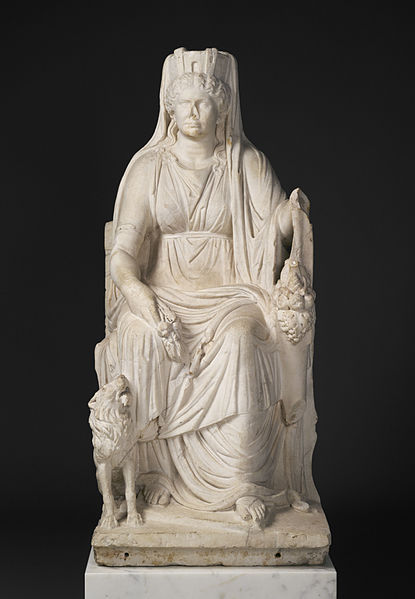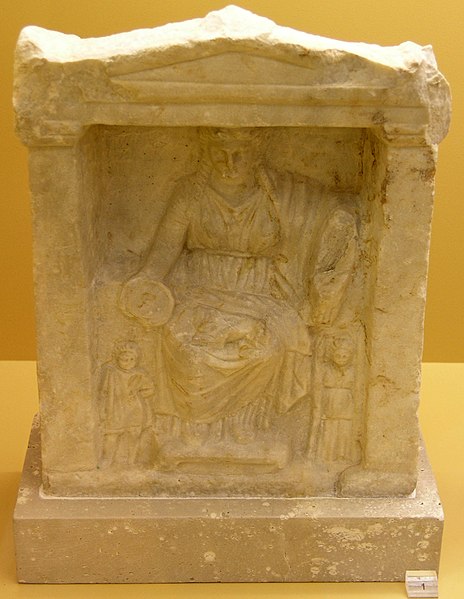According to Greek mythology, the Korybantes or Corybantes were the armed and crested dancers who worshipped the Phrygian goddess Cybele with drumming and dancing. They are also called the Kurbantes in Phrygia.
The Kouretes dancing around the infant Zeus, as pictured in Themis by Jane Ellen Harrison (1912, p. 23; see References section below).
Cybele is an Anatolian mother goddess; she may have a possible forerunner in the earliest neolithic at Çatalhöyük. She is Phrygia's only known goddess, and was probably its national deity. Greek colonists in Asia Minor adopted and adapted her Phrygian cult and spread it to mainland Greece and to the more distant western Greek colonies around the 6th century BC.
Cybele enthroned, with lion, cornucopia, and mural crown. Roman marble, c. 50 AD. Getty Museum
Seated Woman of Çatalhöyük, flanked by large felines as arm-rests, c. 6,000 BC
Seated Cybele within a naiskos (4th century BC, Ancient Agora Museum, Athens)
Cybele in a chariot driven by Nike and drawn by lions toward a votive sacrifice (right); above are heavenly symbols including a solar deity, Plaque from Ai Khanoum, Bactria (Afghanistan), 2nd century BC; Gilded silver, ⌀ 25 cm





